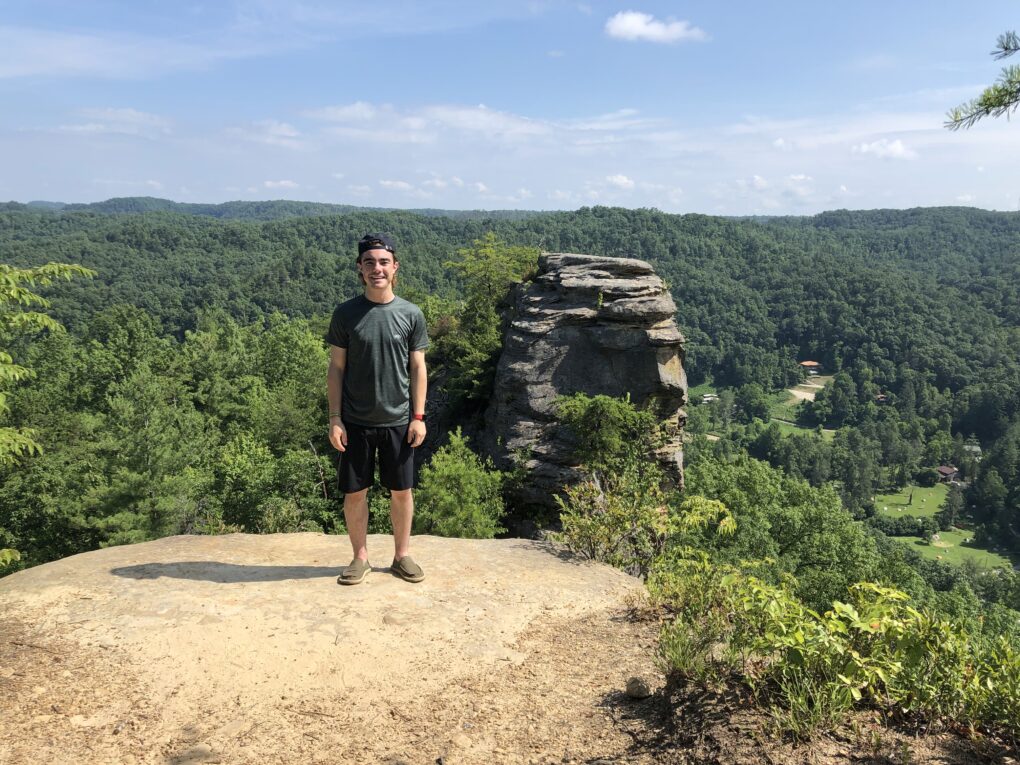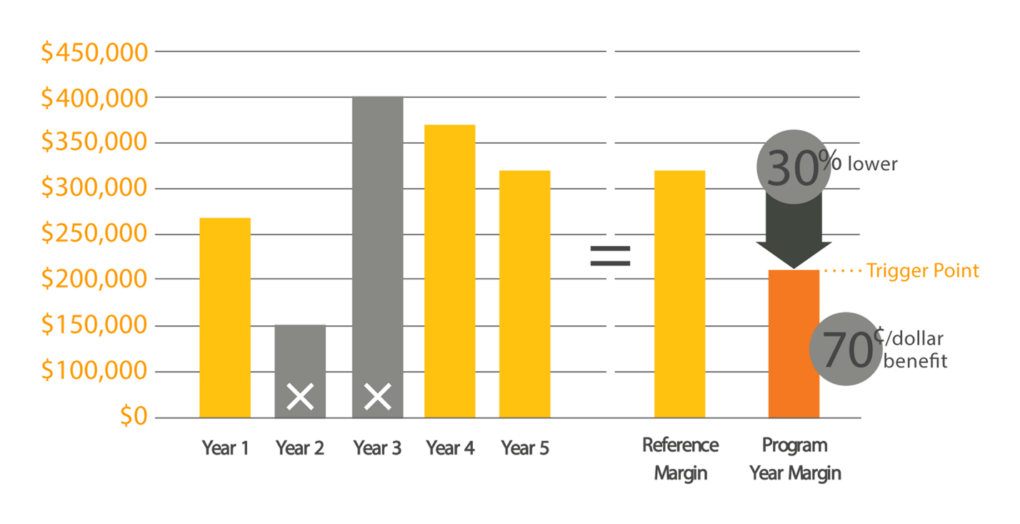By: Parker Sturby, University of Saskatchewan student
What is AgriStability?
The Canadian government introduced AgriStability in 2007 to give producers an optional insurance plan to cover their potential losses (AAFC, 2020). Producers can face losses in many ways including declines in commodity prices, quality losses during harvest, and unpredictable weather changes (SCIC, 2020). AgriStability is set up so that if producers income falls below 70 percent of their recent average, which is calculated by the average income of the last 5 years excluding the highest and lowest years(figure 1), due to any type of production loss, the AgriStability program will help to even out the loss paying up to 70% of the difference (Agricorp, 2013).

Problems with AgriStability
AgriStability has had its fair share of negative feedback over the years. In a survey done by the Agricultural Producers Association of Saskatchewan, only 18% of the 128 farmers surveyed felt that the program benefitted their farm now or would sometime in the future (Leader Post, 2016). One of the main complaints about AgriStability in the past was that if a producer carried another type of insurance, such as hail insurance or crop insurance, the amount paid out by these other programs would count as income and therefore AgriStability would pay out less. This made many producers upset and begin to question the worth of AgriStability. However, in December of 2019, the APAS Minister Marie-Claude Bibeau made an announcement that beginning in 2020 private insurance would no longer count as eligible income. This has been a step in the right direction and one of the biggest changes in AgriStability since its introduction, however, there is still one big problem with the program; government-subsidized crop insurance has not changed and is still considered eligible income (Kuntz, Paul, 2020). Many producers only carry government-subsidized crop insurance and do not go through private insurance companies, leaving them in the same situation they have always found themselves in with AgriStability.
What Can be Done?
There is not much question that AgriStability needs improvement. In order to get more producers enrolled in the program, it must become more appealing and fairer to producers. Since the main concern around the program is its lack of ability to pay out while using government crop insurance, one of the obvious solutions would be to not count government crop insurance as income. This may sound like an easy solution, but it must be noted that insurance programs like this need to get their money from somewhere, and if producers are rapidly dropping out of the program this becomes an issue. AgriStability must make itself more appealing to producers so that more producers are paying into the program, and therefore the program can afford to pay out more money. AgriStability would become much more attractive to producers by separating itself from government crop insurance, causing more producers to pay into the program, and therefore fixing one of its largest issues that producers have with the program. If government crop insurance is kept to guaranteeing producers a certain yield, and AgriStability is kept to guaranteeing producers a minimum yearly income without the two programs colliding with each other, I believe it would become a much more viable and used program across the country.
[su_accordion][su_spoiler title=”References” open=”no” style=”default” icon=”plus” anchor=”” class=””][su_list icon=”icon: check” icon_color=”#47907C”]
Sources
- AAFC. “Government of Canada.” Agriculture and Agri-Food Canada, 13 July 2020, www.agr.gc.ca/eng/agricultural-programs-and-services/agristability/resources/growing-forward-1-program-handbook/?id=1294427843421.
- SCIC. “How It Works – Margins.” 2020, www.scic.ca/agristability/margins/.
- Kuntz, Paul. “AgriStability Changes.” Farming For Tomorrow, 25 Mar. 2020, farmingfortomorrow.ca/farming-your-money/agristability-changes/.
- Leader-Post, Regina. “’Serious Problems’ with Agri-Stability, APAS Survey Says.” Regina Leader Post, Regina Leader Post, 20 Apr. 2016, leaderpost.com/business/agriculture/serious-problems-with-agri-stability-apas-survey-says.
- Agricorp. “What You Need to Know about AgriStability.”, 2013, www.agricorp.com/SiteCollectionDocuments/AgriStability-Infosheet-about-2013-en.pdf.
[/su_list] [/su_spoiler][/su_accordion]
Parker Sturby

My name is Parker Sturby and I am from Gronlid, SK. I grew up on our family farm, which is a mixed cattle and grain operation and the main influence for my choice of schooling. I am currently in my second year of my Agronomy Diploma at the University of Saskatchewan. For this coming growing season, I have rented my first land and am very excited to start farming it. After school I plan to continue working on my family farm, as well as making a career out of trucking.
Aside from farming and school, my main hobby is hockey where I currently play for the Saskatoon Quakers. I also enjoy riding horses, fishing, snowboarding, and pretty much anything outdoors!


